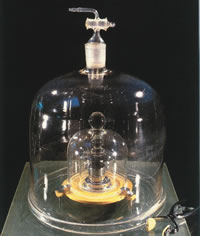I really enjoyed the latest issue of Chemistry International. Did you know that pterin is called “pterin” because it was first isolated from butterfly wings, and folic acid is “folic” because it was first found in leafy vegetables (from Latin folium)? I just learned that from Edward Taylor’s illuminating article on Alimta [1].
Next, two papers on kilogram in the “New SI”. Currently, kilogram is defined as a unit of mass equal to mass of the international prototype kilogram (IPK), which is a cylinder made of 90% platinum—10% iridium alloy kept at the International Bureau of Weights and Measures in France. The problem is, IPK is losing mass! But even if it did not, it is still not good that one of SI base units is linked to an artifact rather than to something more fundamental. The chemist in me prefers the definition of kilo based on carbon-12 mass [2] to the one based on Planck constant [3].

Finally, essay by Jan Trofast on discovery of selenium [4]. I didn’t know that Swedes discovered so many elements!
- Taylor, E.C. (2011) From the wings of butterflies: The discovery and synthesis of Alimta. Chemistry International 33, 4—8.
- Censullo, A.C., Hill, T.P. and Miller, J. (2011) Part I — From the current “kilogram problem” to a proposed definition. Chemistry International 33, 9—12.
- Mills, I. (2011) Part II — Explicit-constant definitions for the kilogram and for the mole. Chemistry International 33, 12—15.
- Trofast, J. (2011) Berzelius’ discovery of selenium. Chemistry International 33, 16—19.





